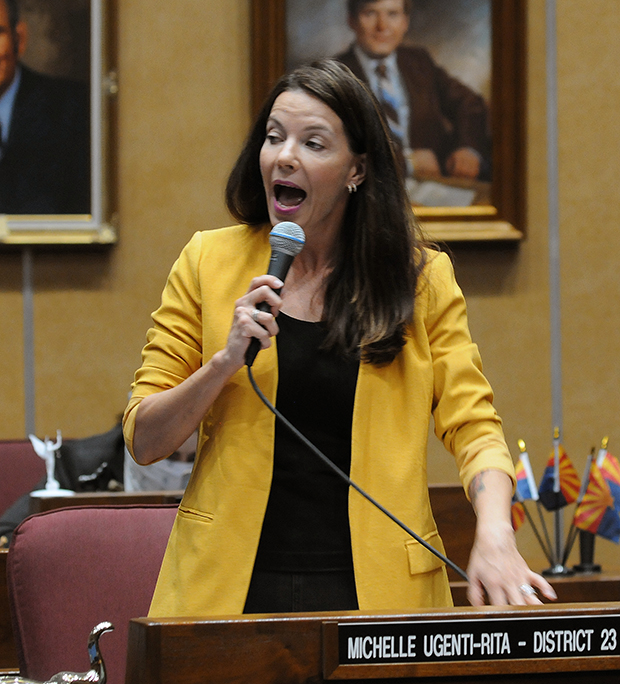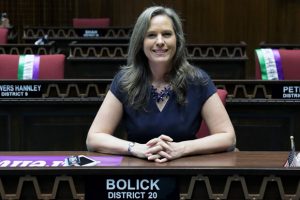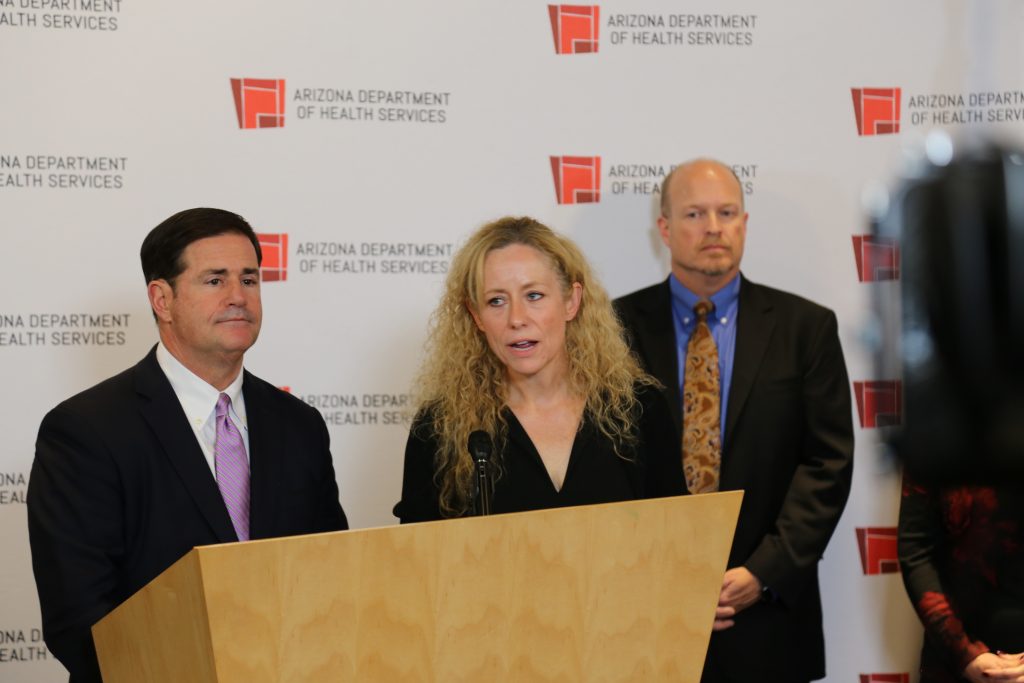
Average teacher salaries in Arizona have increased by 13.3% since fiscal year 2017, but that’s still shy of the 15% cumulative goal laid out for this point in Gov. Doug Ducey’s #20×2020 plan.
This is the second year in a row the average has come up short. The increase in fiscal year 2019 was 8.4% compared to the goal of 10%.
That’s according to a report from Auditor General Lindsey Perry on school district spending in fiscal year 2020.
The report cites a few reasons for the average teacher pay missing this benchmark, one being that districts could put the funds allocated from the 20×2020 plan toward other expenses, such as salaries of other employees, supplies or capital.
“This means a district may have chosen to use all or none of the monies for teacher salary increases,” Perry stated in the report.
Some districts did use that money to help retain other positions in schools besides teachers, such as classroom aides, paraprofessionals and school counselors, Arizona Department of Education spokesman Richie Taylor said.
“That, of course, results in less for each individual person,” he said.
Another reason is the amount a district received was based on the number of students, not on what that district needed to meet the 15% increase. Some districts, then, may not have gotten the money needed and some may have gotten more than enough.
“Additionally, these monies were comingled with other district monies and therefore are not separately identifiable from other district monies,” Perry stated. “Thus, it cannot be determined how the monies were spent.”
An additional consideration is the increasing costs of health insurance and state retirement, said Chuck Essigs, director of governmental relations at Arizona Association of School Business Officials.
“Districts have to make sure that they’re including funds in their budget, not only to fund the salaries of teachers but also to make sure that they fund the benefits that go along with those salaries,” Essigs said.
The governor’s plan looked to increase teacher salaries by 1% in fiscal year 2018, an additional 9% in 2019, and an additional 5% in both 2020 and 2021 for a total increase of 20%.
“20 by 2020 was a very good first step — it was the first big infusion of raises for teachers in quite some time in our state,” Taylor said. “But this report, at least my understanding of it, shows that there’s more work that needs to be done.”
The Governor’s Office did not respond to a request for comment.
For Marisol Garcia, the Arizona Education Association vice president, the report “re-emphasizes the importance” of Prop. 208, Invest in Ed, the voter-approved 3.5% income tax surcharge on more than $250,000 for individuals or on $500,000 for couples filing jointly.
The proposition, Garcia said, intentionally looked to fund not only teacher positions but other school employees, as well.
“We wanted to put it in front of voters to let them know this is not just for teachers; this is for educators,” Garcia said. “It’s to keep those people who are part of your kids’ lives, whether driving them on a bus or giving them a high five when they walk in the classroom who need that money.”
The auditor general also looked at classroom spending.
In fiscal year 2020, Arizona spent $9,136 in operational costs per student, up 2.8% from 2019. However, that’s still almost 30% less than the national average of $12,652 per student in 2018, the most recent year data was available.
“That makes it very difficult for districts to compete,” Essigs said.
Operational costs include the day-to-day functions and activities of schools, including categories such as instruction, administration and plant operations, according to the report.
Student support receives 8.7% of the operation budget compared to the national average of 5.98%.
“Part of that, most people believe that Arizona just has a larger population of students who need additional services,” Essigs said.
Arizona’s operational spending is focused more on plant operations than the national average — 11.5% in the state versus 9.2% nationally.
“Maybe our schools weren’t built as energy efficient, or maybe it has to do with the condition of the buildings, but whatever it is, our school districts are spending a lot more on maintaining their facilities than the national average,” Essigs said.








